Editor's note: This story was originally published in the Belleville News-Democrat.
Pabst Brewing Co. recently changed its Stag beer logo for the second time in three years, and billions of people in the world couldn’t care less.
But this is Belleville.
It’s the city where Stag was born and brewed for decades, where love of Stag has been handed down through the generations, where Stag on tap is a major selling point for bars and restaurants, and where Stag tank tops and sweatshirts are wardrobe staples for some.
It’s a culture, according to John Bigalke, 54, owner of Beatnik’s T-shirt shop on East Main Street.
“There’s a crossover with Stag beer and Belleville history and farming and family and deer hunting and going fishing with Grandpa,” he said. “It’s like Cardinals baseball. People drink it because their grandparents drank it.”
Stag clothing accounts for about 80% of retail sales on the floor at Beatnik’s, which opened more than 20 years ago.
Bigalke applauds Pabst’s decision to return to Stag’s classic 12-point buck logo this summer and ditch the updated graphic image with stylized deer head that it used for three years, but it probably won’t affect his business much.
“My customers were completely uninterested in the modern label,” he said. “For Stag lovers, it’s all about tradition.”
The classic logo is hand-painted on a photo board that stands on the sidewalk outside Beatnik’s. Stag-loving visitors can stick their faces through a hole topped by deer antlers and pose for the camera.
Tina Hofmeister, 58, of Collinsville, slammed on the brakes and parked her car when she saw the board on a recent weekday. She knew that her boyfriend, John Vahlkamp, would want a photo.
He did.
“I was raised on Stag beer,” said Vahlkamp, 59, of Collinsville, formerly of Belleville. “That’s what my dad drank, so that’s what I drink. I worked with my dad (for the St. Clair County Farm Service Agency), and every day after work, we’d stop by the bar and have a couple of Stags.”

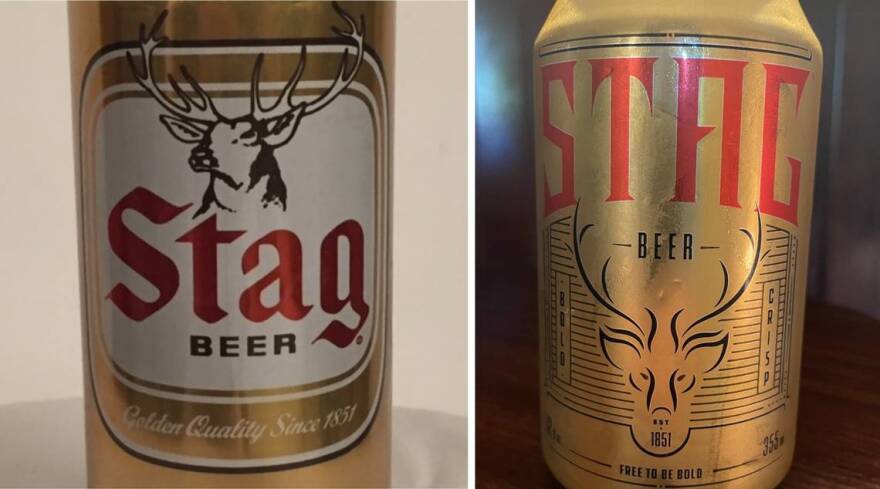
Did New Logo Affect Business?
Other fans of Pabst’s return to the classic logo include Cassandra Staley, co-owner of the Corner Chill and Grill, a Belleville bar and restaurant that has a giant Stag sign painted on the side of its historic brick building.
Cassandra, 50, and her brother, Paul Staley, go through four or five barrels of Stag a week, about a third of that on Wednesdays, when they pack in customers for $1.25 drafts and $1 chicken wings.
But overall Stag sales have gone down in the past three years, with some people switching to Busch Light, Cassandra Staley said. She blames it on those newly abandoned stylized labels.
“That change made a lot of people mad,” Staley said. “It really did. It was like, ‘Why are they having to mess with things? What else have they messed with? Did they change the beer?’”
Los Angeles-based Pabst — which contracts with MillerCoors to brew Stag in Wisconsin and Indiana — assured the public in 2019 that the recipe and 4.6% alcohol content for the Midwestern beer were the same and that the logo change was simply a “branding” decision to expand appeal.
At that time, a company representative reported that 90% of Stag was sold in St. Louis and southern Illinois. Pabst didn’t respond to a request for comment last week.
Bobby Fritz, 57, third-generation owner of beer distributor Robert “Chick” Fritz Inc. in Belleville, agrees that most Stag drinkers prefer the classic logo, but he’s reluctant to directly link beer labels with beer sales.
Fritz noted that COVID-19 dramatically changed consumer habits. People began buying more cans and bottles in grocery stores to take home, particularly during the shutdown of restaurants and bars in 2020.
In Illinois, the industry also was affected by increases in the number of bars that installed video-gambling machines to help make ends meet, according to Bobby’s father, Bob Fritz, 83.
“Everything changed (during the pandemic),” Bob Fritz said. “But we feel very strongly that with the old label coming back that consumers will give Stag a nice try, and that’s all we ask.”
All the talk of people being disgruntled over a beer label seems silly to Matt Schewe, a regular at the Corner Chill and Grill. Companies change product logos all the time, he said.
Schewe drinks Stag because he grew up with the “old-school” brand.
“Before I even learned to read, my grandma would say, ‘Go to the refrigerator and get me a beer. It’s in the gold can,’” he recalls. “It was cheap in high school, and it’s still cheap ($1.75 a bottle at the bar). I’m not paying $3.75 for a beer.”
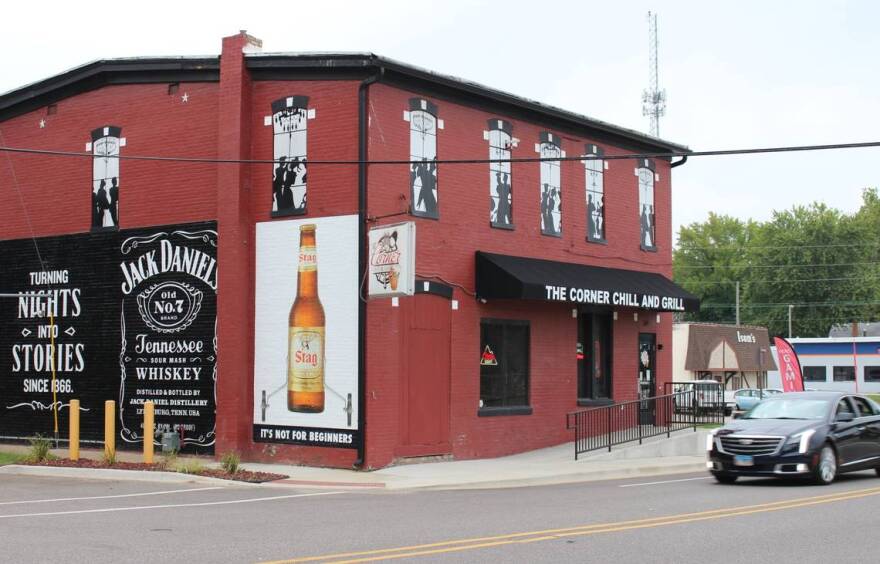

Mainstay at bars and restaurants
Bob Fritz’s father, who was better known as “Chick,” founded the company in 1947. It’s now the largest beer distributor in southern Illinois, and it also serves central Illinois and St. Louis.
Stag cans and bottles with the classic logo started arriving in July as part of a “soft conversion,” so most grocery and liquor stores, bars and restaurants are carrying them now, according to Bob and Bobby Fritz.
They’re both Stag drinkers. Bob Fritz describes it as a “very smooth, lager beer.” When asked if the brand is popular in southern Illinois because it’s cheap, Bobby Fritz made a quick correction.
“They call it ‘popular-priced,’” he said. “It’s not as expensive as the craft or super-premium products, but it’s not budget beer. It’s kind of in the middle. It’s mainstream.
“It pretty much crosses all demographics. Age doesn’t really matter. There’s a lot of girls who drink Stag. People of all different trades drink Stag. It has a very broad consumer base.”
Last week, Schnucks stores in Belleville were charging $9.49 for 12 packs of 12-ounce Stag cans, compared to $12.99 for Blue Moon and $11.99 for Bud Light. You could take home two 15 packs of Milwaukee’s Best Ice for $12.99.
Whatever its price point, Stag is on the menu in many — if not most — Belleville bars and restaurants. Some use the beer as an ingredient in recipes. Case in point: The Stag Brat, which The Beast BBQ grilled up for patrons of Belleville’s annual Oktoberfest.
When Roger Dunning resurrected the legendary Lyle Fischer’s bar and named it Roger’s Place in 2019, he outlined his formula for success: An “old-school,” friendly atmosphere, frosted mugs and Stag on tap.
Stag is the best-selling draft beer out of six choices at Fletcher’s Kitchen & Tap in Belleville and a top seller at its newer Swansea location, according to owner Derek Betz.
“It’s very nostalgic,” he said. “It’s like family. People talk about it like it’s a local sports team.”
Over the years, Belleville Stag fans have come up with some creative ways to show their devotion. Customers of the former Pitchers sports bar gathered on West Main Street in 2014 to stage the world’s largest Stag beer toast. They didn’t make it into the Guinness Book of World Records, but they had fun trying.
People also have experimented with taste enhancements. Old-timers add a few sprinkles of salt. College students drop in quartered pickle spears.
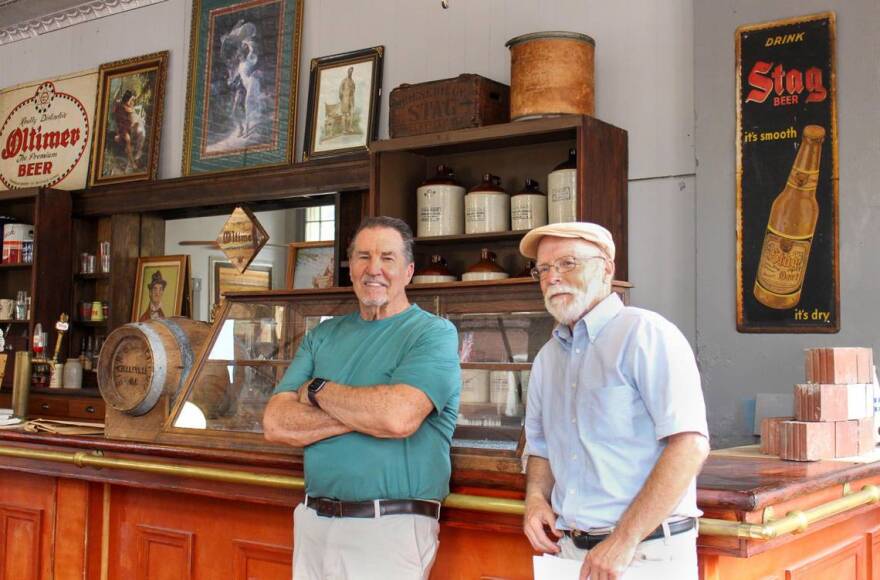
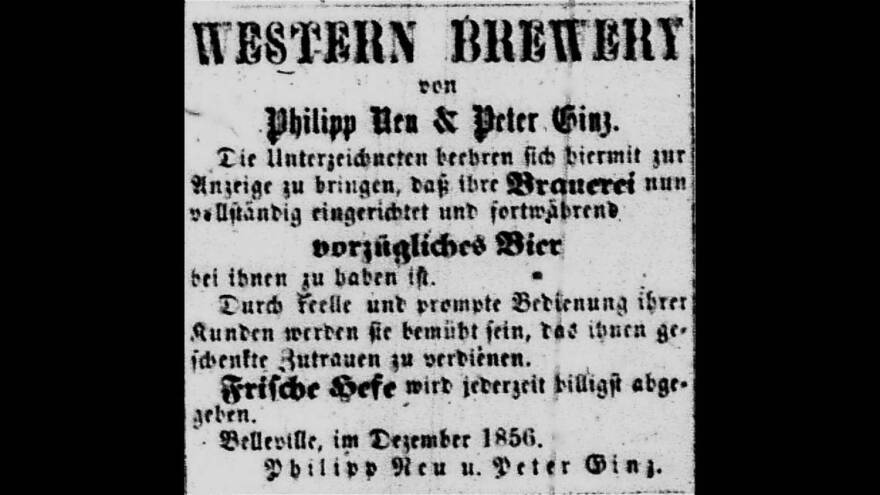
Golden quality since .... 1907
The classic Stag logo may be popular, but it has one problem: It includes the slogan “Golden Quality Since 1851,” which stretches the truth in a big way.
Western Brewery in Belleville invented Stag in 1906 as a Christmas brew and made it a permanent product in 1907, according to Belleville historian Bob Brunkow. The company held a naming contest. The winner, George Wuller, received $25 in gold.
Brunkow believes the 1851 date made its way into the Stag slogan around 1951, when then Griesedieck Western Brewery was celebrating its purported 100th anniversary in business.
“I think they wanted to claim origination rights over Star Brewery, which started in 1854, and they got away with it,” Brunkow said.
Brunkow became convinced that Western Brewery didn’t exist in 1851 when he found an advertisement in the German newspaper Belleviller Zeitung, announcing its 1856 opening by Philip Neu and Peter Gintz. Deed records show the land wasn’t purchased until 1855.
The updated Stag logo featured a new slogan, “Free to be bold,” but it doubled down on the date with “Est. 1851” under the stylized deer head.
The Western Brewery on West E Street changed hands several times before Henry Griesedieck and investors took over in 1912. It was later sold to Carling Brewing Co. and then G. Heileman, which consolidated with Bond Corp. Holdings.
Over the years, locals simply called it the “Stag brewery.”
Griesedieck Western and Star Brewery are the focus of the Historic Garfield Street Saloon museum that’s being developed by Belleville Historical Society, according to President Larry Betz. They were the only two breweries left in the city before and after Prohibition. Star-Peerless stopped production in 1957.
Betz is a Stag collector with an estimated 250 items, ranging from signs and bottles to calendars and trays. If he’s drinking beer, he prefers Budweiser Select, but some of his six children, including Derek, like Stag.
“They say if you grow up on Stag, you can never leave it,” Larry Betz said. “I don’t know if that’s true, but there’s a lot of old-timers who still drink it. And it has become kind of trendy. It’s a cool thing for the younger generation to do.”


‘Otto’ and a goodyear blimp
2019 wasn’t the first year for changes in Stag logos, slogans or advertising strategies. In the 1930s and ‘40s, a German character named Otto served as the beer’s mascot, according to Brunkow.
Griesedieck Western got into some hot water around that time with its claim that Stag was made without sugar, a campaign that overlooked the fact sugar is produced through grain processing. It then adopted the slogan “Sugar free as beer can be.”
In 1951, the company decided to celebrate its 100th anniversary by contracting with Goodyear to fly a Stag blimp for two years around 10 states where the beer was sold. Newspaper ads touted its arrival in each city.
“Perhaps the biggest fiasco came in Memphis on the night of June 15, 1951, when the ship floated around Crump Stadium, flashing ‘Drink Stag Beer. Buy it in quarts,’” BND Answer Man Roger Schlueter wrote in a 2006 column.
“The people in the stadium, who were attending a revival led by the Rev. Billy Graham, were not amused. ‘If I had had a machine gun, I’d have brought him down,’ one outraged Mrs. Hattie W. Coopwood said afterward.”
The Stag brewery was the largest employer in Belleville for many years with a peak of about 800 employees in the 1950s, Brunkow said.
Betz took a tour of the brewery in the early 1970s, when the company was still allowing employees to imbibe on the job. They could bring their own buckets for drafts, get bottles from a cart that was pushed around or grab a can from the break-room fridge.
“One explanation for the number of Stag drinkers in Belleville today is that so many people worked at the plant,” Betz said. “They got free beer, so their families drank it, and it became a tradition.”
Heileman closed the brewery in 1979, but only for a few months. When it reopened, younger employees replaced many veterans who didn’t return.
One drunken worker drove a forklift off a loading dock, and another fell asleep in the boxcar of a train that chugged away, according to former employees interviewed for a BND retrospective in 2014.
“After that, there was no more drinking on the job,” the piece stated.
Belleville residents who didn’t work at the brewery still felt its presence in their daily lives. They could hear the steam whistle, which blew five times a day to signal shift changes. A towering brick smokestack with “Stag Beer” in white vertical letters was part of the cityscape.
Belleville leaders celebrated the brewery’s 1979 reopening by making plans for the city’s first Oktoberfest the following year. Then Mayor Richard Brauer tapped the golden keg of Stag to kick off festivities.
Heileman, which had become a subsidiary of Bond, closed the brewery for good in 1988.
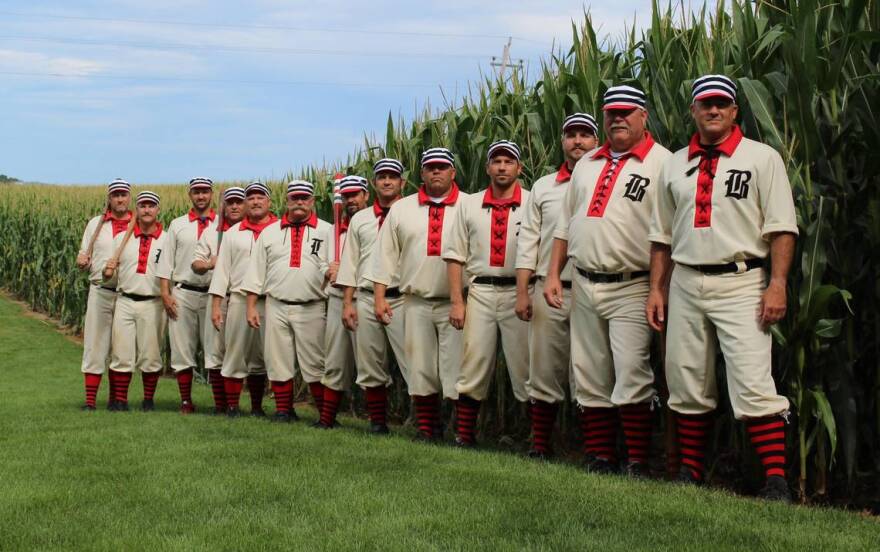

Baseball And Beer Ambassadors
Today, Belleville Historical Society isn’t the only organization working to keep the Stag legacy alive. The Labor & Industry Museum has preserved dozens of brewery photos and artifacts.
The Belleville Stags Vintage Base Ball Club travels throughout southern and central Illinois and greater St. Louis to get exercise, have fun and educate the public about the history of their favorite pastime.
Their second favorite pastime? Drinking Stag beer after games.
“We’re not beer snobs, but it’s highly likely that you’ll find Stag in the icebox wherever the vintage club is playing,” said Paul “Rooster” Mentzer, 51, one of the team captains.
“We’ve also been known to take Stag as gifts. We’ve introduced it to other vintage clubs in the region.”
The local club isn’t patterned off the original Belleville Stags, a brewery-supported team affiliated with the St. Louis Browns in 1946 and New York Yankees in 1947 as part of the Class D Illinois State League. That team played at Stag Field, near the intersection of Illinois 161 and South Illinois Street.
The current Belleville Stags follow rules and practices of the 1860s. Their fields have no baselines. They use wooden bats and period-accurate base balls. They wear knickers and pillbox-style hats.
“We play barehanded,” Mentzer said. “There were no gloves in 1860. Those were introduced in the mid-1880s, and they were rudimentary. They were more like work gloves.”
The Belleville Stags play home games in a field behind the Belleville/Swansea Moose Lodge No. 1221, where the bar serves — you guessed it — Stag on tap and plenty of it.
Belleville also has two Stag retiree clubs, one called Stag Retirees made up of employees from 1979 and prior and one called Stag Reunion made up of employees after the reopening. They meet periodically at local restaurants.
Deaths have reduced membership to about 10 people in recent years, so the clubs now combine gatherings, according to Maggie Wilson, 77. She worked as an accounting clerk for a year before the brewery closed.
“It was a wonderful job,” Wilson said. “The people were great. Everybody got along with each other. There was a good rapport between the company people and the union people.
“(The shutdown) was a blow to Belleville. Those were good-paying union jobs.”
Wilson is always pleasantly surprised to see so many people drinking Stag beer and wearing Stag clothing at Oktoberfest each year. She figures some are descendants of her co-workers who are showing pride in their hometown and its place in brewing history.
For those who don’t have the proper attire, John Bigalke would be happy to help them at Beatnik’s T-shirt shop.
“Our goal is to convert one Stag drinker a week,” he said.
Teri Maddox is a reporter with the Belleville News-Democrat, a news partner of St. Louis Public Radio.


